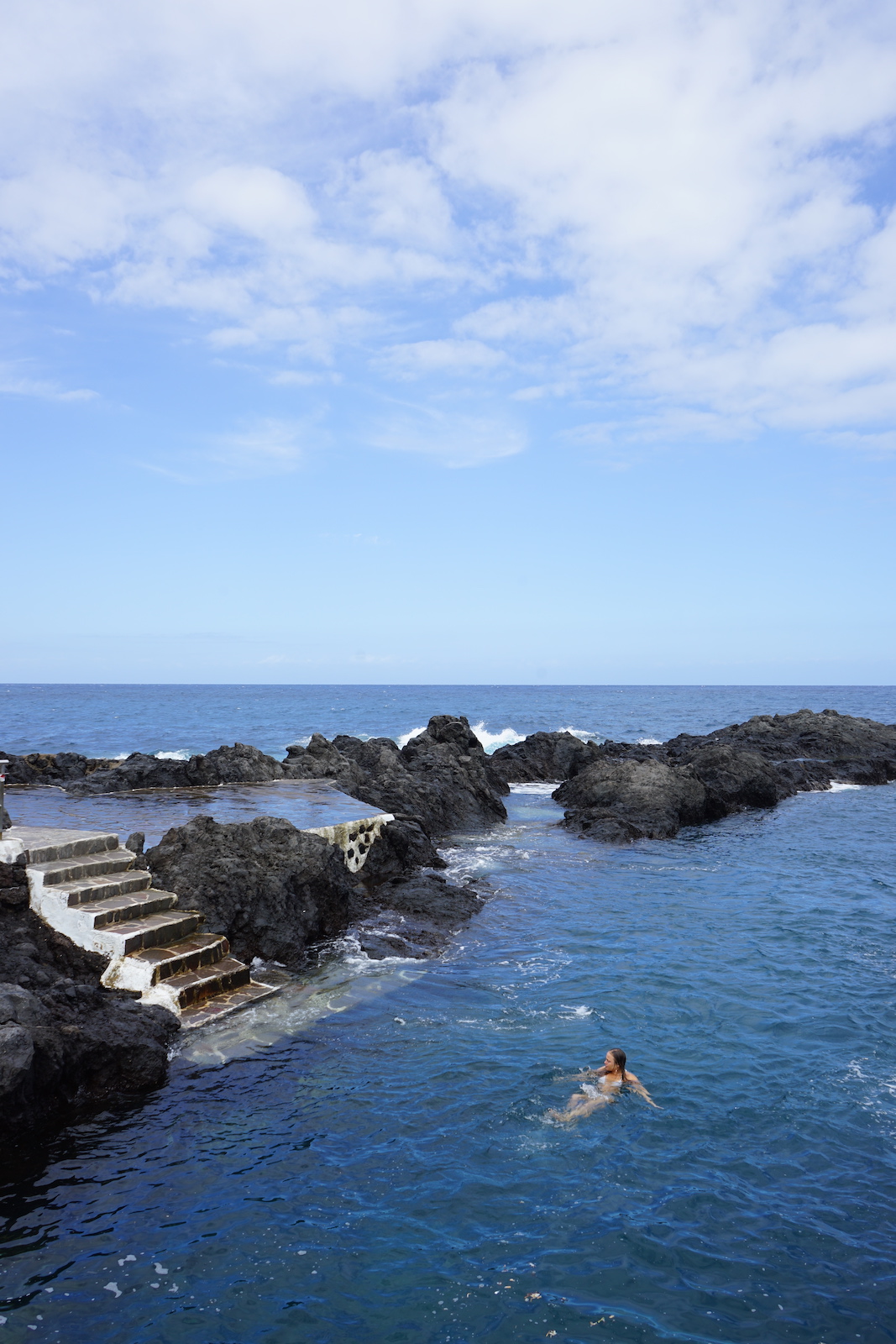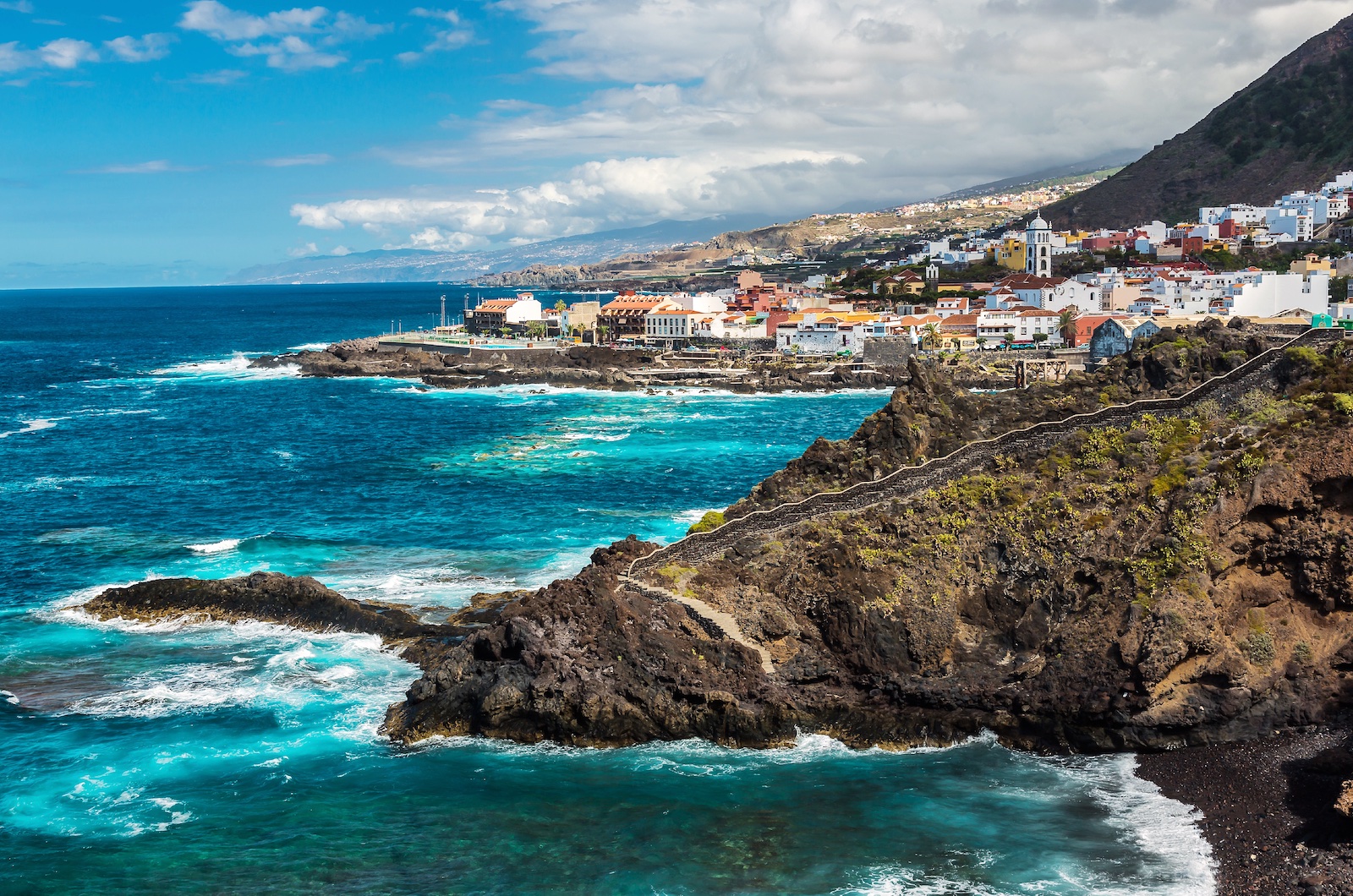Trail 13 winds through bulbous bushes that look like sea urchins. The fauna-like flora clings to barren basalt. White clouds swirl below as if the surf of the Atlantic Ocean is rising to my elevation of 2,100 metres. I feel like I’m walking on a seabed, amid anemones dotting a coral reef.
I’m hiking along the arid remnants of an ancient volcano—Las Cañadas—where the Mirador de Sámara loop trail skirts the caldera’s edge and the 3,718-metre Pico del Teide towers just beyond. This massif dominates Tenerife, the largest of the Canary Islands, and is Spain’s highest peak and the world’s third-tallest volcano.
At this altitude, my shortness of breath offers a chance to pause. I marvel at the lunar forms of cinder cones, lava flows, levees, and 360-degree views. To one side is snow-covered El Teide. To the other is a sea of clouds. To the west, somewhere beneath, are another two of the seven Canary Islands, La Gomera and La Palma. And just 300 kilometres to the east is the western coast of Africa. As my local guide points out, this archipelago is almost the same latitude as Qatar.
It feels as hot, too, even as the sun is descending and tinging shrubby scabious tufts in gold foil. The mounds of blooms are endemic here, along with hundreds of other flora and fauna. It’s why Charles Darwin wanted to come to Tenerife before the Galapagos, following in the footsteps of his idol, Alexander von Humboldt, a pioneering naturalist and explorer. (Though the Beagle did anchor off the Tenerife port of Santa Cruz, Darwin never made it ashore as the ship was quarantined due to fears of cholera.)
Humboldt had climbed Mount Teide in 1799, inspiring him to study volcanoes and produce beautifully rendered and meticulous cross-sections of geological and ecological detail still revered today. After his time on Tenerife, Humboldt wrote: “I have never beheld a prospect more varied, more attractive, more harmonious in the distribution of the masses of verdure and rocks.”
That verdure Humboldt described more than 200 years ago is still something to behold. Multifarious greens are a stark contrast to the red, black, and chestnut hues of volcanic rock and range from the Canary Island pine forest that rings El Teide to terraced vineyards and plantations of banana trees beside the sea.

Photo by Barb Sligl.
I descend from the heights of Parque Nacional del Teide (a UNESCO World Heritage Site) to Garachico, a pretty town and once-thriving port decimated by a volcanic eruption in 1706. Today, Garachico has reclaimed the dark tentacles of lava flow that lace its shores into a network of public swimming pools connected by walkways and accessed by ladders and stairs. On a sultry afternoon, the patchwork of pools is teeming with locals from toddlers to octogenarians.
It’s a lovely testament to life—risen from the ashes—under a volcano. There’ve been at least 13 eruptions here, and the island itself was formed by hundreds of volcanoes. As my guide jokes, “In Tenerife, every mountain is a volcano.”
***
Later, on Costa Adeje in the south, I finally swim in the Atlantic. The small black-sand crescent of Playa de Ajabo is flanked by dark volcanic cliffs, and despite being on the popular resort-studded side of the island, I have it to myself. I bob in the waves before sitting quietly on the shore, burying my feet in the pebbly volcanic detritus. Just past these shores was Columbus’s route to the so-called New World and where he witnessed the eruption of another of the island’s volcanoes, Boca Cangrejo, in 1492.
I ponder this small island’s influence on the world, from Humboldt and Darwin to Charles Piazzi Smyth, an astronomer who climbed El Teide with his bride on their honeymoon in 1856 to set up an observatory and prove Newton’s theory that a telescope’s clarity increases at higher altitudes. Their celestial findings led to his and Tenerife’s names being on the moon: Piazzi Smyth crater and Montes Teneriffe range.
Humboldt was originally a Neptunist (named for the Roman god of water and the sea), believing that all rocks, even volcanic, were formed from a vast primordial ocean. He became a Plutonist (named for the god of the underworld) when geologists realized magma within the earth erupts from volcanoes to form first lava and then rock. This shift in perspective in the late 18th century became the foundation of modern geology.
Plutonists were also known as Vulcanists. The god of fire and the forge is a fitting muse, and it’s easy to imagine scientific theories taking shape while traversing Tenerife’s volcanic landscape. Visible from everywhere on the island, whether beach or caldera, the dramatic peak of El Teide has long been a beacon—for sailors using it as a navigational tool, evolutionary scholars forging a new worldview, and a hiker in search of stellar views.
Read more from our Spring 2023 issue.









